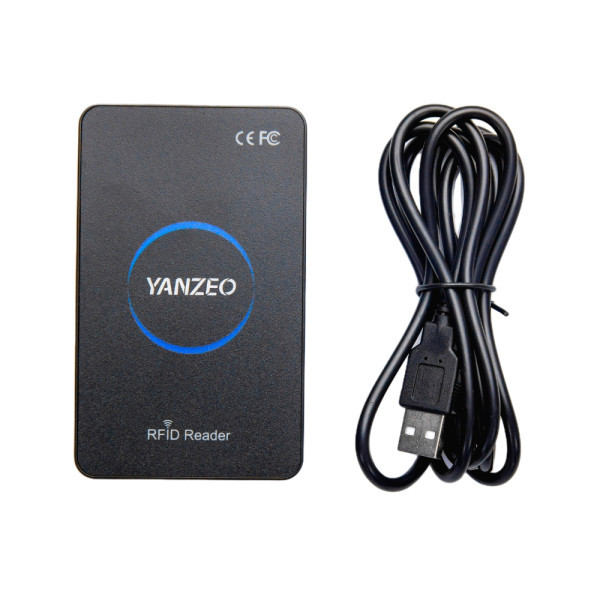Understanding RFID readers and writers: RFID data carriers
RFID reader, also known as RFID fixed device, is an electronic device used to read and write information in RFID tags. Yanzeo will delve into the relevant knowledge of RFID readers and writers from four perspectives: function, application scenarios, types, and advantages.
1、
The RFID reader is an important component of the RFID system, and its main function is to read and write data in RFID tags. When an RFID tag enters the range of the reader, the reader communicates with the tag through an RF signal to read or write the data in the tag. RFID readers enable RFID technology to be applied in various fields such as logistics tracking, inventory management, product certification, and visitor management.
2、 RFID reader/writer type
RFID readers can be classified into the following types based on different standards such as transmission distance, working frequency, interface protocol, and reading and writing capabilities:
Low frequency RFID reader: The working frequency is generally 125KHz, and the transmission distance is relatively short;
High frequency RFID reader: The working frequency is generally 13.56MHz, with a wide transmission distance;
Ultra high frequency RFID reader: The working frequency is generally 860-960MHz, which can achieve large-scale tag data reading;
Multi frequency RFID reader: A reader with multiple frequencies that can read different types of RFID tags;
Interface protocol RFID reader: includes USB interface, RS-232 interface, TCP/IP interface, etc., which can communicate with various devices.
3、 Features of RFID reader and writer
Efficiency. RFID readers can achieve wireless communication, so their speed is very fast and can instantly read information on tags, greatly improving operational efficiency.
Real time performance. Due to the fact that RFID readers can instantly read information on tags, they can monitor or manage information in fields such as logistics and inventory in real-time, ensuring the timeliness and accuracy of information.
Automation. RFID readers can automatically read and write labels without human intervention, which not only has high efficiency, but also greatly reduces the labor error rate in work and reduces the burden on employees.
Large scale support. RFID readers can simultaneously read a large amount of label data, thus having great advantages in large-scale production and logistics scenarios.
4、 RFID reader/writer application scenarios
Logistics tracking. RFID readers can be used for item identification and tracking in logistics systems. In this scenario, RFID tags can be attached to the item, and when the item passes through the RFID reader, the reader will read the information in the tag and update the inventory management system.
Inventory management.RFID readers are also widely used in various inventory management scenarios, such as retail, manufacturing, and pharmaceutical logistics.Employees only need to use RFID handheld devices or RFID readers to scan the labels on the goods, and the inventory management system can retrieve real-time information about the items from the database, thus achieving real-time inventory management.
Product certification.RFID tags are widely used for product certification and anti piracy control.For example, electronic device manufacturers can place an RFID tag on the device to ensure that it has not been tampered with or counterfeited.
Visitor management. RFID readers can also be used for secure access control systems and visitor management systems, such as schools, hospitals, exhibition halls, and factories. When a visitor uses an RFID bracelet or card to enter a specific area, the RFID reader will be able to read the information in the tag and know if they are allowed or denied entry to the area.
The application range of RFID readers and writers is becoming increasingly widespread, and they can be used in fields such as logistics tracking, inventory management, product certification, and visitor management. Not only can they improve work efficiency, but they can also achieve real-time monitoring and full process management. At present, there are many different types of RFID readers and writers available for selection on the market. Choosing the appropriate RFID reader and writer based on actual needs will help promote more efficient and intelligent development in various fields.









